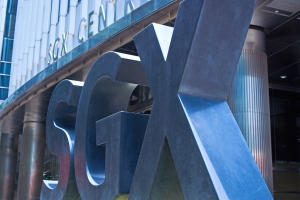On January 16, 2018, the Monetary Authority of Singapore (MAS) announced updated governance and listing rules, and invited interested parties to weigh in via a consultation that runs through March 15, 2018.
 The revised regime was drafted by the Corporate Governance Council (the “Council”), convened by the MAS back in February 2017, and the announcement of the Council’s recommendations caps off a busy year for corporate governance in the region. Beyond Singapore, Malaysia, Thailand, Philippines, Pakistan and Sri Lanka all adopted and/or implemented new corporate governance codes. In addition, India is poised to release updates on its corporate governance practices following the 2017 Uday Kotak Committee’s report on Indian corporate governance practices.
The revised regime was drafted by the Corporate Governance Council (the “Council”), convened by the MAS back in February 2017, and the announcement of the Council’s recommendations caps off a busy year for corporate governance in the region. Beyond Singapore, Malaysia, Thailand, Philippines, Pakistan and Sri Lanka all adopted and/or implemented new corporate governance codes. In addition, India is poised to release updates on its corporate governance practices following the 2017 Uday Kotak Committee’s report on Indian corporate governance practices.
Singapore has typically been the standard-bearer of corporate governance among Asian markets. In its 2016 report, the Asian Corporate Governance Association ranked it as the regional leader. Yet, there is room for improvement. This is where the Council has acted to not only propose a new code of corporate governance (the “Draft Code”), but also amendments to the Singapore Exchange Limited (“SGX”) Listing Rules, and a new draft Practice Guidance.
Draft Code
The Draft Code seeks to build off the existing Code of Corporate Governance, which was adopted in 2012. While the Draft Code expands on the discussion of practices, such as those pertaining to board committees, there are new practice areas identified under the Draft Code. They include:
- Making the lead independent director available to shareholders for communication.
- The disclosure of director commitments and directorships, including an assessment of a directors’ ability to discharge their duties.
- Separate disclosure of votes of “non-controlling shareholders” in the election of an independent director.
- Disclosure of engagements with remuneration consultants; the remuneration paid to CEOs, the top five key management personnel; and details of equity-based remuneration.
- A suggestion for boards to create a risk committee, if appropriate.
- Improved meeting disclosure, especially for “bundled” proposals.
- Enhanced engagement with shareholders and stakeholders alike.
Amended SGX Listing Rules
Where the Draft Code takes a “comply or explain” approach, changes to SGX Listing Rules would be binding. The proposed changes to the Listing Rules include the following:
- Mandatory training for new directors on the roles and duties of being a director.
- Reduce from 10% to 5% the level of shareholding at which an independent director would no longer be considered to be independent. The 5% limit would also determine “substantial shareholders”.
- Introduction of board tenure limits for independent directors, which until now have only been prescribed for Singapore-incorporated banks and insurers. One option would be to set a “hard cap” of nine consecutive years of service. The other option would be to adopt a two-tier voting system, similar to that of Malaysia when assessing the independence of a long-serving independent director.
- Require all listed companies to have audit, remuneration and nomination committees, which previously not all of these committees were mandated.
- Mandate that directors stand for election by rotation once every three years, which previously was stated as “should submit themselves for re-nomination and re-election at least once every three years.”
- Establish set disclosure styles for director biographical and professional background information.
- Require issuers to disclose their comments on internal control processes and weaknesses, along with corrective steps to reduce weaknesses.
- Compliance with the Code will be compulsory. The Listing Rules would mandate that all issuers provide in the annual report its compliance with the Code, along with detailed and explicit explanations for any variances from the Code.
Practice Guidance
The third document, the Practice Guidance, is designed to be voluntary, providing support and reference for companies that choose to adopt corporate governance practices more typically found in other markets. They include, but are not limited to:
- Setting caps on transactions involving directors and/or their families with an issuer at S$50,000 for direct material transactions and S$200,000 for indirect material transactions.
- Disclosing whether personal networks or search services were used in the nomination process of a director.
- The recommendation that directorships and principal commitments be limited where: (i) a full-time executive should not serve on more than two listed company directorships; (ii) retirees can serve on up to five listed company directorships; and (iii) the time commitment of non-executive chairman should be considered a similar time commitment as two or three non-chair non-executive directorships.
- Issuers should consider enacting clawback provisions on incentive remuneration for executives when there are misstatements of financial results or misconduct resulting in an issuer’s financial loss.
The potential changes from the new regime would help Singapore to retain its position as a regional leader in corporate governance. While many of proposed changes are encapsulated in new codes and regulations in other markets, the issue of how to implement the multitude of proposed changes and whether to make voluntary practices compulsory will likely dominate the debate between issuers and investors alike going forward.
Nevertheless, now is the time for investors to make their voices heard and provide their views on potential changes to Singaporean corporate governance. Interested parties are invited to respond to the consultation paper to MAS through March 15, 2018.
Jeff is a manager covering Singapore and the South Asia region.
